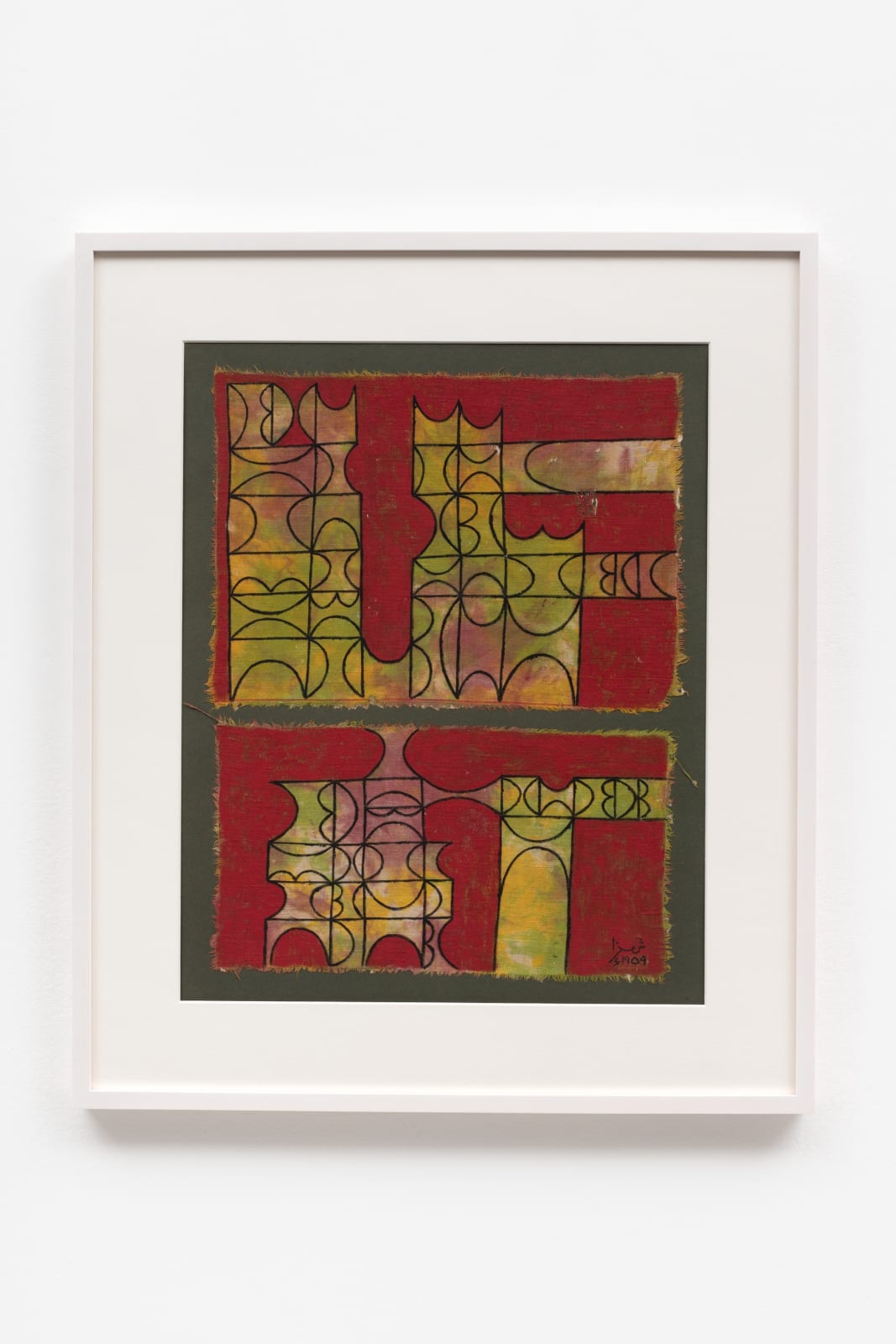
Anwar Jalal Shemza
Composition in Lime Green on a Crimson Background, 1959
Oil on hand-dyed cloth on mount board on hardboard
54 x 42 cm
21 1/4 x 16 1/2 in
Framed: 77.8 x 65.7 x 3.8 cm
30 5/8 x 25 7/8 x 1 1/2 in
21 1/4 x 16 1/2 in
Framed: 77.8 x 65.7 x 3.8 cm
30 5/8 x 25 7/8 x 1 1/2 in